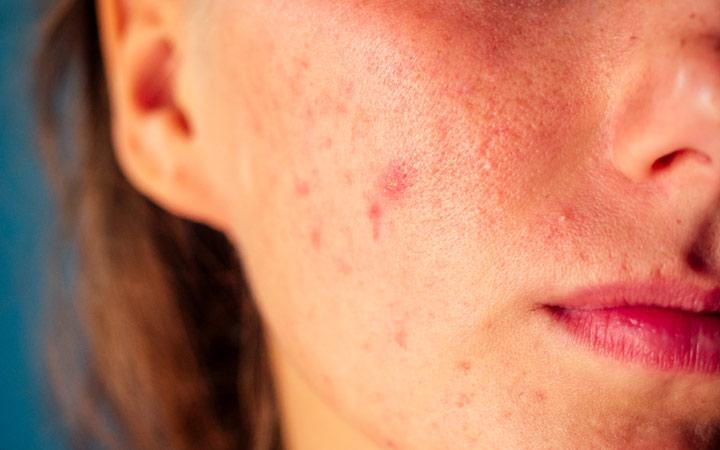When trying to get rid of acne, we try every product with acne written on it or claims to help reduce spots. That can aggravate the skin and lead to more breakouts or dry and sensitive skin. Therefore, it’s essential to understand which type of acne we have and what’s the best way to treat them. There are six main types of acne, and we usually divide them into two categories: inflammatory and non-inflammatory acne.
Consider this post as an introduction to every type of acne. And to learn how to treat each type of acne, follow the links under each paragraph.
Non-inflammatory types of acne (Comedones)
The most common types of acne are whiteheads and blackheads. They appear when pores clog with oil, bacteria, and dirt. Both of them are non-inflammatory acne. And we shouldn’t pop them because that can lead to complications and a more severe type of acne.
Read more: What is comedonal acne and how to get rid of it
1. Whiteheads

Whiteheads or closed comedones are small, white or skin-coloured bumps. They are usually white in the centre and have a bit of red colour around. The skin around it might be tight or wrinkled.
2. Blackheads

Blackheads or open comedones are small blacks or dark-coloured spots or bumps, and the skin around them is usually normal. The black in blackheads is not dirt, but just the content of the whitehead that got darker because of the exposure to the air.
Inflammatory types of acne
Inflammatory acne is usually red and swollen and can sometimes be painful or itchy. Papules, pustules, nodules, and cysts are all inflammatory acne and should be treated by a professional.
3. Papules

They are small red bumps that don’t have white or yellow puss and can be sore to the touch. They form when comedones (whiteheads) rupture, and the bacteria from it gets deeper into the skin tissue, which causes inflammation.
Read more: What are papules and how to get rid of them
4. Pustules

Commonly known as pimples, pustules also form when comedones rupture, but unlike papules, they are full of pus. They are often red with white or yellow heads on top.
Read more: What are pustules and 3 steps how to clear them
5. Nodules

Nodules are bigger swollen bumps deeper in the skin than papules or pustules. They can be the same colour as the skin or appear red. Also, they can be rather painful. Nodules can last from a few weeks to a few months, and they have to be treated, otherwise, they can leave scars.
Read more: What are nodular acne and how to get rid of them
6. Cystic acne

Cysts are also deep in the skin, but unlike nodules, they are full of pus. They are usually red and painful to the touch and can be itchy. They are the least common type of acne. Cystic acne should be treated by a dermatologist.
Read more: Cystic acne – 7 helpful skincare tips to actually clear them
I hope I helped you to recognize what type of acne you have, as it is essential to treat them properly. There are six main types of acne, and each of them requires a slightly different approach. I wish I knew how to recognize the difference about five years ago when my skin was getting more inflamed without sight of hope.
If you want to learn more about me and my journey, click here.